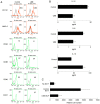Photodynamic therapy reduces the inhibitory effect of osteosarcoma cells on dendritic cells by upregulating HSP70
- PMID: 30250570
- PMCID: PMC6144566
- DOI: 10.3892/ol.2018.9322
Photodynamic therapy reduces the inhibitory effect of osteosarcoma cells on dendritic cells by upregulating HSP70
Abstract
Osteosarcoma is the most common primary bone tumor and predominantly affects children and adolescents. The prognosis for patients with osteosarcoma is poor. Therefore, the development of novel treatments for osteosarcoma is required. Photodynamic therapy (PDT) is a disease site-specific treatment that utilizes a photosensitizing agent along with light to kill cancer cells. This agent only works following activation by certain wavelengths of light. After the agent is absorbed by the cancer cells, light is then applied to the area to be treated. The light causes the drug to react with oxygen, which produces radical and reactive oxygen species that kill the cells. However, the immune reaction that occurs following PDT remains unknown. The present study demonstrated that the necrosis of osteosarcoma cells inhibited the function of dendritic cells. However, treatment of osteosarcoma cells with PDT restored the function of dendritic cells by upregulating heat shock protein 70. Taken together, the results of the present study provided insight into the subsequent molecular reaction following PDT treatment of osteosarcoma at the molecular level.
Keywords: HSP70; dendritic cells; osteosarcoma; photodynamic therapy.
Figures



Similar articles
-
Aloe-emodin-mediated photodynamic therapy induces autophagy and apoptosis in human osteosarcoma cell line MG‑63 through the ROS/JNK signaling pathway.Oncol Rep. 2016 Jun;35(6):3209-15. doi: 10.3892/or.2016.4703. Epub 2016 Mar 24. Oncol Rep. 2016. PMID: 27035222 Free PMC article.
-
Low-level light therapy potentiates NPe6-mediated photodynamic therapy in a human osteosarcoma cell line via increased ATP.Photodiagnosis Photodyn Ther. 2015 Mar;12(1):123-30. doi: 10.1016/j.pdpdt.2014.10.009. Epub 2014 Nov 13. Photodiagnosis Photodyn Ther. 2015. PMID: 25462575 Free PMC article.
-
Enhancement of the effect of 5-aminolevulinic acid-based photodynamic therapy by simultaneous hyperthermia.Int J Oncol. 2005 Jul;27(1):193-201. Int J Oncol. 2005. PMID: 15942660
-
A review and outlook in the treatment of osteosarcoma and other deep tumors with photodynamic therapy: from basic to deep.Oncotarget. 2017 Jun 13;8(24):39833-39848. doi: 10.18632/oncotarget.16243. Oncotarget. 2017. PMID: 28418855 Free PMC article. Review.
-
Photodynamic therapy and cancer: a brief sightseeing tour.Expert Opin Drug Deliv. 2007 Mar;4(2):131-48. doi: 10.1517/17425247.4.2.131. Expert Opin Drug Deliv. 2007. PMID: 17335411 Review.
Cited by
-
Preclinical and Clinical Evidence of Immune Responses Triggered in Oncologic Photodynamic Therapy: Clinical Recommendations.J Clin Med. 2020 Jan 24;9(2):333. doi: 10.3390/jcm9020333. J Clin Med. 2020. PMID: 31991650 Free PMC article. Review.
-
Evaluation of histone deacetylase inhibitor substituted zinc and indium phthalocyanines for chemo- and photodynamic therapy.RSC Adv. 2021 Oct 28;11(55):34963-34978. doi: 10.1039/d1ra05404j. eCollection 2021 Oct 25. RSC Adv. 2021. PMID: 35494743 Free PMC article.
-
Decoding the Impact of Tumor Microenvironment in Osteosarcoma Progression and Metastasis.Cancers (Basel). 2023 Oct 23;15(20):5108. doi: 10.3390/cancers15205108. Cancers (Basel). 2023. PMID: 37894474 Free PMC article. Review.
-
Antitumor effects and mechanisms of pyropheophorbide‑α methyl ester‑mediated photodynamic therapy on the human osteosarcoma cell line MG‑63.Int J Mol Med. 2020 Apr;45(4):971-982. doi: 10.3892/ijmm.2020.4494. Epub 2020 Feb 10. Int J Mol Med. 2020. PMID: 32124948 Free PMC article.
-
Progress of Phototherapy Applications in the Treatment of Bone Cancer.Int J Mol Sci. 2021 Oct 21;22(21):11354. doi: 10.3390/ijms222111354. Int J Mol Sci. 2021. PMID: 34768789 Free PMC article. Review.
References
LinkOut - more resources
Full Text Sources
Other Literature Sources
